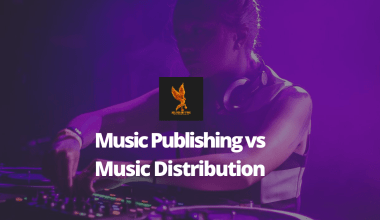When we think about musicians making money, we often think of album sales, streaming revenue, and live performances. However, how much do artists make from merchandise is an equally important question. Merchandise is a crucial income stream for artists. So, how much do artists make from merchandise? Let’s explore this topic in-depth.
Introduction to Merchandise Revenue
Merchandise, or “merch,” includes any product sold by artists that feature their name, logo, or image. Common items include t-shirts, hoodies, hats, posters, and accessories. The revenue from merchandise can be significant, especially for independent artists who rely on multiple income streams.
Why Merchandise Matters
Merchandise serves several purposes:
- Revenue Generation: Merch sales can be a substantial part of an artist’s income.
- Promotion: Wearing an artist’s merch is like free advertising.
- Fan Engagement: Fans love to feel connected to their favorite artists, and owning merch helps build that connection.
Types of Merchandise
Artists can sell a variety of products:
- Apparel: T-shirts, hoodies, caps
- Accessories: Pins, patches, tote bags
- Collectibles: Posters, vinyl records, limited edition items
Factors Influencing Merchandise Revenue
Several factors affect how much do artists make from merchandise:
- Popularity: More popular artists typically sell more merch.
- Pricing: Higher prices can mean more profit but might reduce sales volume.
- Production Costs: Lower production costs lead to higher profit margins.
- Marketing: Effective promotion can boost sales.
Calculating Merchandise Revenue
To understand how much do artists make from merchandise, let’s break down the costs and profits.
Example Calculation
- Cost of Production:
- T-shirt: ₹200 each (including design, printing, and materials)
- Selling Price:
- T-shirt: ₹800 each
- Profit per T-shirt:
- Profit = Selling Price – Cost of Production = ₹800 – ₹200 = ₹600
If an artist sells 500 t-shirts at a profit of ₹600 each:
- Total Profit = 500 * ₹600 = ₹3,00,000
Case Studies: Successful Merchandising
Independent Artists
Independent artists often rely heavily on merch sales. For example, an indie band might sell their own designed t-shirts and posters at concerts and through their website, making substantial profits directly. This direct engagement often leads to higher margins as there are fewer intermediaries.
Major Artists
Major artists with large fan bases can generate millions in merch sales. For instance, during a world tour, a famous pop star can sell thousands of pieces of merch, resulting in significant revenue. The scale of their operation allows them to negotiate better deals with suppliers, reducing costs and increasing profits.
Merchandising Strategies
Limited Editions
Limited edition items create a sense of urgency and exclusivity, encouraging fans to buy quickly. These items can become collector’s pieces, increasing their value over time and creating a loyal fan base.
Bundling
Bundling merch with album sales or concert tickets can increase overall sales. For example, a bundle might include a t-shirt, a signed poster, and a digital download of the latest album. This strategy not only boosts sales but also enhances the fan experience.
Online Stores
Online stores allow artists to reach a global audience. Platforms like Shopify and Big Cartel make it easy for artists to set up and manage their own merch stores. By having an online presence, artists can sell merchandise 24/7, reaching fans worldwide.
The Role of Tours in Merchandise Sales
Tours provide a prime opportunity for merch sales. Fans attending concerts are more likely to purchase merch as a souvenir. Setting up attractive merch booths at concert venues can significantly boost sales. During tours, artists can introduce tour-exclusive items, further driving sales.
Social media plays a crucial role in how much do artists make from merchandise. Artists can use platforms like Instagram, Facebook, and Twitter to promote their merch and connect with fans. Engaging with fans through social media can increase loyalty and boost sales.
Instagram is a visual platform perfect for showcasing merchandise. Artists can post photos and stories of new products, behind-the-scenes content, and even run contests or giveaways to engage fans. By using Instagram Shopping, artists can tag products directly in their posts, making it easier for fans to purchase.
Facebook allows artists to create shop pages where fans can purchase merch directly. Additionally, live streams and posts can help promote new items and sales. Facebook’s targeted advertising can also help reach potential buyers who are most likely to purchase.
Twitter is great for quick updates and engaging with fans. Artists can tweet about limited-time offers, share links to their online stores, and interact with fans who post about their merch. Twitter polls can be used to gather feedback on new merch ideas.
Collaborations and Partnerships
Collaborating with other artists or brands can boost merchandise sales. These partnerships can introduce artists to new audiences and create unique, appealing products. Collaborations often generate buzz and media attention, further increasing sales.
Artist Collaborations
When two artists collaborate on merchandise, they combine their fan bases, increasing potential sales. For example, a collaboration between a musician and a visual artist can result in unique, collectible items that appeal to fans of both artists.
Brand Partnerships
Partnerships with well-known brands can also be lucrative. Brands might collaborate with artists to create exclusive merchandise lines, which can be sold through both the artist’s and the brand’s channels. These partnerships can elevate the artist’s brand and reach new markets.
Leveraging Fan Loyalty
Loyal fans are more likely to purchase merchandise. Engaging with fans through social media, newsletters, and fan clubs can help build a strong, dedicated fan base. Personalized interactions and exclusive offers can turn casual fans into loyal customers.
Fan Clubs
Creating a fan club with exclusive perks, such as early access to merchandise, can drive sales. Fans who feel like they are part of an exclusive group are more likely to purchase merch. Fan clubs can also offer limited edition items, creating a sense of exclusivity.
Regular newsletters that keep fans updated on new merchandise, upcoming tours, and other news can keep them engaged and eager to support the artist through merch purchases. Newsletters can include special discounts and early access to new items.
The Economics of Merchandise Production
Understanding the economics behind merchandise production can help artists maximize their profits.
Bulk Production
Ordering merchandise in bulk can significantly reduce the cost per item. This is because manufacturers often offer discounts for larger orders. However, artists need to balance this with the risk of overproduction.
Direct-to-Garment Printing
Direct-to-garment (DTG) printing allows for lower upfront costs and no minimum orders, making it ideal for artists who want to start small or test new designs without a large investment. DTG printing offers flexibility and reduces the risk of unsold inventory.
Outsourcing vs. In-House Production
Artists can choose to outsource merchandise production to companies that handle everything from printing to shipping. Alternatively, they can manage production in-house, which gives them more control but requires more effort and resources. Outsourcing can be cost-effective and efficient for large orders.
Merchandising for Different Audience Segments
Different segments of an artist’s audience may prefer different types of merchandise. Understanding these preferences can help tailor products to meet demand.
Young Fans
Younger fans might prefer trendy apparel like t-shirts and hoodies. Bright colors, modern designs, and popular slogans can appeal to this demographic. Limited edition releases can create excitement among younger fans.
Older Fans
Older fans might appreciate more classic and subtle designs, such as vintage-style t-shirts, vinyl records, and high-quality posters. Offering higher-priced, premium items can cater to this audience.
Super Fans
Super fans, or the most dedicated followers, are often willing to spend more on exclusive and limited edition items. Offering signed merch, collectible items, and VIP experiences can cater to this group. Exclusive meet-and-greet opportunities can also drive merch sales.
The Role of E-Commerce Platforms
E-commerce platforms play a significant role in how much do artists make from merchandise. These platforms make it easy to set up online stores, manage inventory, and process orders.
Shopify
Shopify is a popular platform for artists because it offers easy setup, a wide range of customization options, and integrated marketing tools. Artists can use Shopify to sell directly to fans and track their sales and inventory. Shopify also integrates with social media platforms, making it easy to promote merch.
Big Cartel
Big Cartel is another user-friendly platform that is ideal for independent artists. It offers a simple interface, customization options, and affordable pricing plans. Big Cartel’s simplicity makes it easy for artists to get started quickly.
Managing Inventory and Fulfillment
Efficient inventory management and fulfillment processes are crucial to maximizing merchandise sales and profits.
Inventory Management
Keeping track of inventory levels helps prevent overproduction and stockouts. Using inventory management software can automate this process, making it easier for artists to manage their stock. Accurate inventory management ensures that popular items are always available.
Fulfillment
Outsourcing fulfillment to a third-party logistics provider can save time and resources. These providers handle everything from storing inventory to packing and shipping orders. Efficient fulfillment ensures that fans receive their purchases quickly and in good condition.
Pricing Strategies
Setting the right prices for merchandise is essential to maximizing profits. Pricing too high can deter sales, while pricing too low can reduce profit margins.
Cost-Based Pricing
Cost-based pricing involves calculating the total cost of producing an item and adding a markup to ensure a profit. This method ensures that all costs are covered, but it may not always reflect the value perceived by fans. Understanding the target audience’s willingness to pay is crucial.
Value-Based Pricing
Value-based pricing considers how much fans are willing to pay for an item. This method can lead to higher prices and profits, especially for exclusive or limited edition items. Conducting surveys and gathering feedback can help artists determine the optimal price points.
Promotions and Discounts
Offering promotions and discounts can boost merchandise sales, especially during special events or holidays.
Flash Sales
Flash sales create urgency by offering limited-time discounts on merchandise. These sales can drive quick spikes in revenue and clear out old inventory. Announcing flash sales through social media and email newsletters can attract immediate attention and increase sales.
Bundles
Bundling multiple items together at a discounted price can increase the average order value. For example, offering a t-shirt, poster, and album together for a reduced price can encourage fans to buy more. Bundles can be themed around tours, album releases, or holidays to make them more appealing.
Licensing and Merchandising Rights
Understanding licensing and merchandising rights is crucial for artists, especially when collaborating with other brands or using licensed images and logos.
Licensing Agreements
Licensing agreements outline the terms under which an artist’s name, image, or logo can be used on merchandise. These agreements ensure that both parties benefit fairly from the sales. Artists should negotiate terms that protect their interests and ensure fair compensation.
Protecting Intellectual Property
Artists should protect their intellectual property by trademarking their name and logo. This prevents unauthorized use and ensures that they retain control over their brand. Registering trademarks provides legal recourse against infringement and enhances the artist’s ability to monetize their brand.
The Role of Fans in Merchandise Success
Fans play a critical role in how much do artists make from merchandise. Engaging with fans and creating a strong community can drive merch sales and enhance brand loyalty.
Fan Interaction
Regular interaction with fans through social media, live streams, and meet-and-greet events can strengthen the artist-fan relationship. This engagement makes fans feel valued and more likely to support the artist through merch purchases.
User-Generated Content
Encouraging fans to share photos and videos of themselves with the artist’s merch can create a sense of community and provide valuable marketing content. Artists can feature fan posts on their social media channels, creating a positive feedback loop that encourages more fans to buy and share merch.
Environmental and Ethical Considerations
More artists are considering the environmental and ethical implications of their merchandise. Sustainable and ethically produced merch can appeal to fans who are conscious of these issues.
Sustainable Materials
Using sustainable materials, such as organic cotton and recycled fabrics, can reduce the environmental impact of merchandise. Promoting these eco-friendly products can attract fans who prioritize sustainability.
Ethical Production
Ensuring that merchandise is produced in ethical working conditions is important for many fans. Partnering with manufacturers that follow fair labor practices can enhance the artist’s reputation and appeal to ethically-minded consumers.
Expanding Merchandise Offerings
Artists can expand their merchandise offerings to include a wider range of products. Diversifying the product line can increase sales and cater to different fan preferences.
Seasonal Items
Offering seasonal items, such as holiday-themed merch or summer apparel, can keep the merchandise line fresh and relevant. These limited-time offerings can drive sales during specific periods.
Customization
Allowing fans to customize merchandise with their names or favorite lyrics can add a personal touch that increases the appeal of the products. Customization options can also command higher prices.
Tracking and Analyzing Sales Data
Tracking and analyzing sales data is essential for understanding how much do artists make from merchandise and identifying areas for improvement.
Sales Analytics
Using sales analytics tools can help artists track which products are selling well and identify trends. This data can inform future product decisions and marketing strategies.
Customer Feedback
Collecting and analyzing customer feedback can provide insights into what fans like and dislike about the merchandise. This feedback can guide product development and improve customer satisfaction.
The Future of Merchandise Sales
The future of merchandise sales looks promising, with new technologies and platforms making it easier for artists to reach fans and sell products.
Virtual and Augmented Reality
Virtual and augmented reality technologies can enhance the online shopping experience by allowing fans to see how merch looks on them before buying. These technologies can create immersive shopping experiences that drive sales.
Blockchain and NFTs
Blockchain technology and non-fungible tokens (NFTs) offer new ways for artists to sell merchandise and connect with fans. NFTs can be used to create digital collectibles that fans can buy, sell, and trade.
Conclusion
How much do artists make from merchandise can vary widely based on their popularity, marketing strategies, and production costs. However, with the right approach, merch can be a significant and profitable revenue stream for both independent and major artists. By understanding their audience, leveraging social media, collaborating with brands, and considering ethical production, artists can maximize their merchandise revenue.
For further reading, explore these related articles:
- How to Start an Artist Merchandise Store
- Integrating Merchandise on Your YouTube Official Artist Channel
For additional resources on music marketing and distribution, visit Deliver My Tune.






